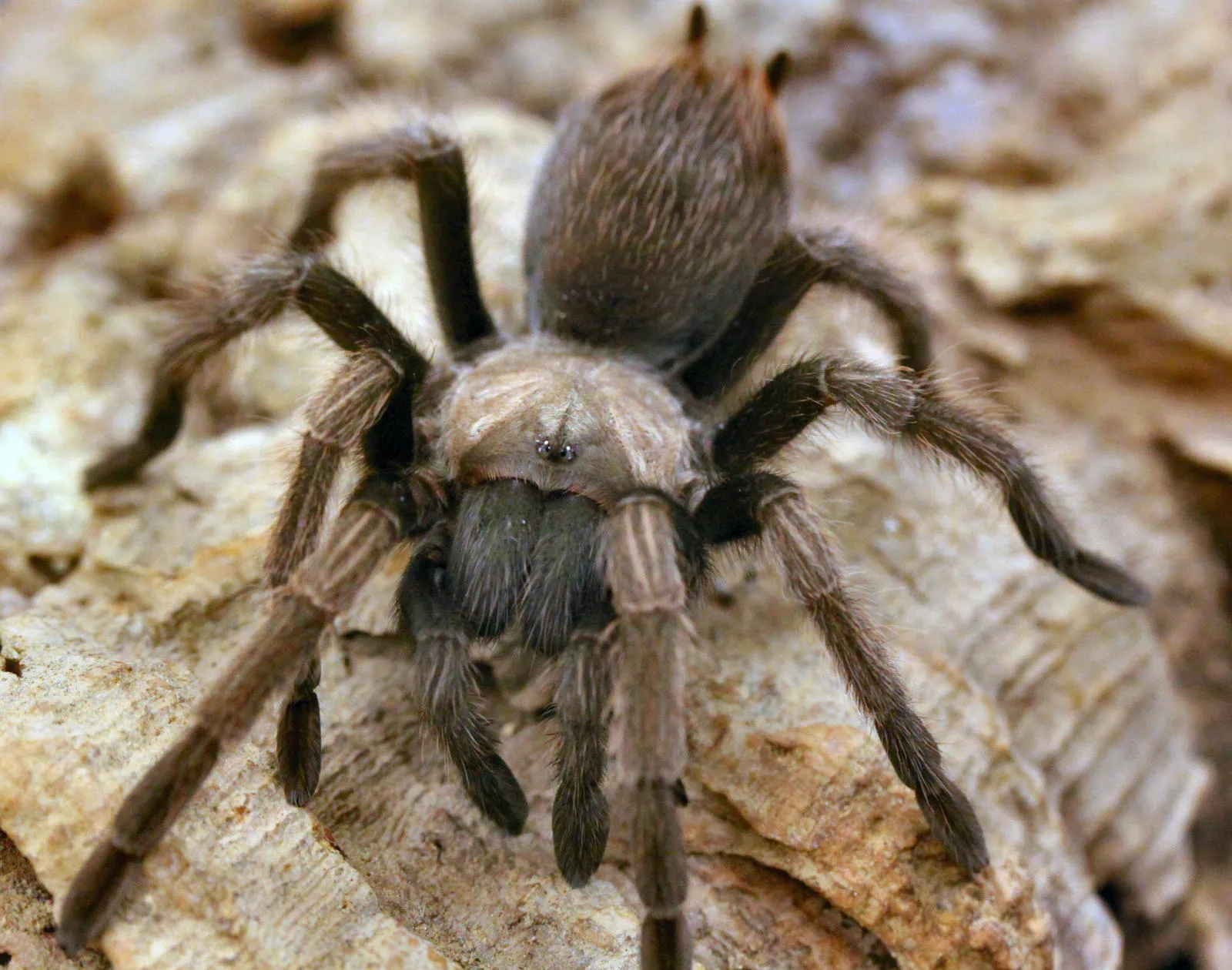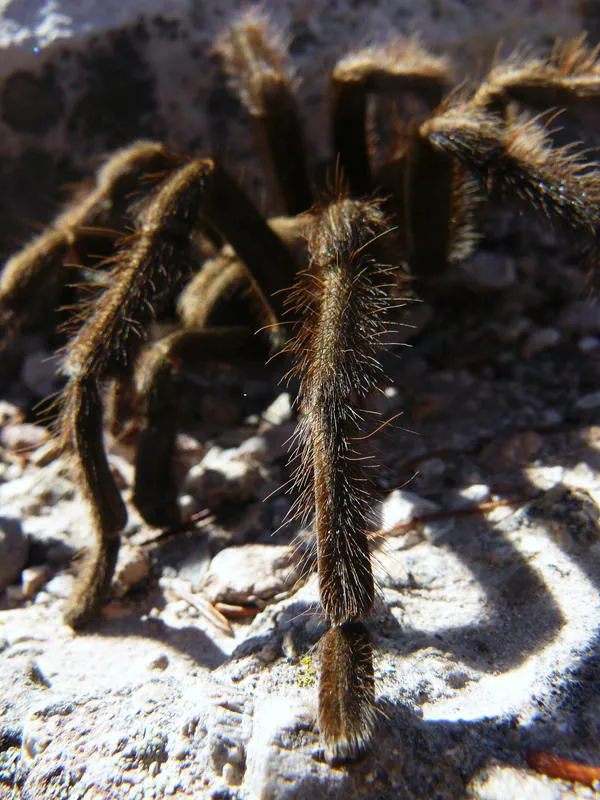Introduction
California is home to a fascinating array of wildlife, and among the most captivating creatures are the California tarantulas. These large, hairy spiders are often misunderstood, but they play a vital role in the ecosystem. This article will delve into five key facts about California tarantula species, helping you understand their characteristics, behaviors, and importance. From their physical traits to their habitats and life cycles, we’ll explore the world of these intriguing arachnids. Whether you’re a seasoned nature enthusiast or simply curious about the local fauna, this guide provides valuable insights into the life of California tarantulas. Understanding these creatures can foster a greater appreciation for the biodiversity of California and the crucial role spiders play in maintaining ecological balance.
Fact 1 What is a California Tarantula
California tarantulas belong to the Theraphosidae family, a group of large and often hairy spiders found worldwide. Unlike some other spider species, tarantulas are known for their relatively long lifespans and slow growth rates. In California, these spiders are native and play an important role in the ecosystem. They are primarily nocturnal hunters, preying on insects, small reptiles, and other invertebrates. Despite their imposing size and appearance, California tarantulas are generally not aggressive towards humans. They prefer to avoid confrontation and will only bite if they feel threatened. Their presence in the California landscape is a sign of a healthy ecosystem, and understanding their role is important for conservation efforts.
Physical Characteristics of California Tarantulas

California tarantulas are easily recognizable due to their large size and hairy appearance. They typically have eight legs, two chelicerae (mouthparts), and a body divided into two main parts the cephalothorax (fused head and thorax) and the abdomen. Their bodies are covered in numerous hairs, which serve various functions, including sensory perception and defense. These hairs can also cause irritation if they come into contact with skin, acting as a deterrent to potential predators. The size of a California tarantula can vary depending on the species, with some reaching a leg span of up to six inches or more. Their robust build and impressive size make them one of the most noticeable spiders in the state.
Coloration and Size
The coloration of California tarantulas can vary, but they often display shades of brown, black, and sometimes reddish hues. The specific color can depend on the species and even the local environment, providing some camouflage. Adult females are generally larger than males. The females can live for several years, while males typically have a shorter lifespan. Understanding these physical characteristics is essential for accurate identification and appreciation of these fascinating creatures. They can range in size from a leg span of 3 to 6 inches, with females being larger than males.
Fact 2 Common California Tarantula Species
While several tarantula species can be found in California, two of the most commonly encountered are worth noting. These species have distinct characteristics and habitats, making them relatively easy to identify once you know what to look for. Observing them in their natural environment can be a thrilling experience for nature enthusiasts, and knowing a bit about them adds to the appreciation of California’s biodiversity. Identifying different species is key to understanding their ecological roles and conservation needs. Learning about these two species can give you a great start to understanding the variety of tarantulas in California.
California Ebony Tarantula

The California Ebony Tarantula (Aphonopelma eutylenum) is known for its dark coloration, often appearing black or very dark brown. This species is found in various habitats, including grasslands and scrublands. They are typically seen in the late summer and fall during their mating season. They are known for their relatively docile nature, making them less likely to bite unless provoked. The females of this species can live for many years, while the males have a much shorter lifespan after mating. They are a common sight in certain regions of California, particularly in the southern parts of the state. They are important predators, helping to control insect populations.
California Tan Tarantula
The California Tan Tarantula (Aphonopelma chalcodes) presents a lighter coloration, usually tan or brown. This species is often found in drier habitats, such as deserts and arid grasslands. Like the Ebony tarantula, they are commonly seen during their mating season. They tend to be less aggressive and prefer to retreat rather than attack. The Tan tarantula plays a vital role in its ecosystem, preying on insects and small animals. These spiders are fascinating to observe, and they contribute significantly to the balance of nature. They are also found in the southern parts of California. They are very important to the biodiversity.
Fact 3 Habitat and Distribution
California tarantulas are found in various habitats throughout the state, each species preferring specific environments. Understanding their habitat preferences is essential for finding and observing these spiders. These spiders play a crucial role in their ecosystems, and they are a fascinating part of California’s wildlife. Protecting their habitats is key to ensuring their survival and preserving the natural balance of these regions. Observing them in their native settings offers unique insights into their behavior and their importance in the natural world.
Preferred Habitats

California tarantulas favor habitats that provide shelter and prey. They can be found in grasslands, chaparral, scrublands, and even deserts. They often create burrows in the ground, which serve as both homes and safe havens from predators and extreme weather. They usually live in areas with moderate temperatures, and enough moisture to support their prey. The availability of suitable habitats is vital to their survival. Protecting the habitats is important for maintaining healthy tarantula populations. The types of habitats often vary based on the species, with some preferring drier environments. Understanding these preferences helps in spotting them in the wild.
Geographic Distribution
The geographic distribution of California tarantulas covers a wide range, from the southern regions to the northern parts of the state. However, their presence is influenced by factors like climate, vegetation, and the availability of prey. They are particularly abundant in areas with suitable soil for burrowing and a thriving insect population. Knowing their distribution helps in knowing where to look and also supports conservation efforts. The distribution can vary depending on the species, so it is worth researching the specific regions where a particular species is common. Generally, they are found in the warmer, drier regions of California. They are part of the diverse ecosystems of California.
Fact 4 Identifying Tarantula Gender
Identifying the gender of a California tarantula requires close examination of its physical features. Understanding how to differentiate between males and females is helpful for observing their behavior and understanding their life cycles. These differences can offer valuable insights into their mating habits and overall survival strategies. Distinguishing between them is a fascinating aspect of tarantula biology and is something many people are interested in, especially those who keep them as pets or study them. Recognizing these key features is essential to understanding them. The easiest way to tell the difference is by looking at their appearance.
Distinguishing Males and Females

One of the easiest ways to determine a tarantula’s gender is by examining its pedipalps (small appendages near the mouth). Mature males have specialized pedipalps that resemble boxing gloves, used for mating. Additionally, males have smaller bodies and longer legs compared to females. The presence of tibial spurs on the front legs is another characteristic of mature males. Females tend to have a more robust body and a larger abdomen, which is designed for carrying eggs. These differences become more apparent as the spiders mature. These are the basic characteristics that can help you distinguish between the two genders. Understanding the difference gives a deeper understanding.
Fact 5 Behavior and Lifespan
The behavior and lifespan of California tarantulas vary, significantly influenced by their gender and environmental factors. Understanding their habits is crucial for appreciating their role in the ecosystem and promoting conservation. They show many different behaviors, and learning more about them can be exciting. These behaviors are adaptations that help them survive and thrive in their environment. Understanding these aspects is key to properly appreciating the unique qualities of California tarantulas.
Typical Tarantula Behaviors
California tarantulas are primarily nocturnal hunters, actively foraging for food at night. They spend most of the day in their burrows, waiting for dusk to emerge. They are ambush predators, patiently waiting for prey to come within range. They consume insects, small reptiles, and other invertebrates. During the mating season, males leave their burrows in search of females, a behavior often observed in late summer and early fall. When threatened, they may flick urticating hairs from their abdomens as a defense mechanism, causing irritation to potential predators. Understanding these behaviors helps in observing these tarantulas.
Lifespan of California Tarantulas

The lifespan of California tarantulas differs significantly between males and females. Females can live for many years, often exceeding 20 years in the wild. Males, however, have a much shorter lifespan. After mating, their primary function is complete, and they often die within a year or two. Factors like access to food, habitat quality, and predator presence can also influence their lifespan. Their longevity contributes to their role in the ecosystem, as they help regulate insect populations over extended periods. Understanding the lifespan of California tarantulas is key for appreciating the species.
Conclusion
California tarantulas are fascinating creatures that play a vital role in their ecosystems. Understanding their physical characteristics, preferred habitats, and behaviors provides valuable insights into their lives. From their distinct appearance to their fascinating mating rituals and long lifespans, these spiders are a captivating part of California’s diverse wildlife. Learning about these spiders helps to build appreciation for the important balance that is in nature. Protecting their habitats and understanding their behaviors are crucial for ensuring that these remarkable arachnids continue to thrive in California. Appreciating their uniqueness is a step towards environmental stewardship.
